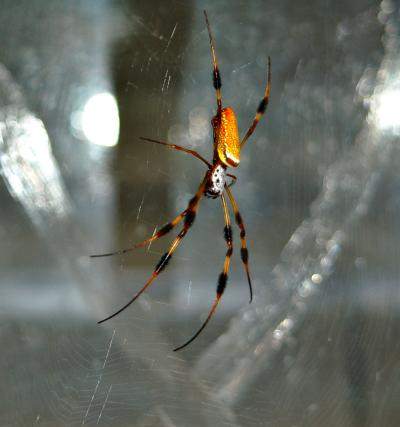Scientists at Arizona State University (ASU) say they are closer to understanding what makes the fiber that spiders spin – weight for weight – at least five times as strong as piano wire.
Indeed, says, Professor Jeffery Yarger of ASU’s Department of Chemistry and Biochemistry, the researchers have discovered a method of obtaining a wide variety of elastic properties of the silk of several intact spider webs using a sophisticated, but still non-invasive laser light scattering technique.

“Spider silk has a unique combination of mechanical strength and elasticity that make it one of the toughest materials we know,” said Yarger.
“This work represents the most complete understanding we have of the underlying mechanical properties of spider silks.”
According to Yarger, spider silk is an exceptional biological polymer, related to collagen (the stuff of skin and bones) but significantly more complex in terms of structure.
As such, the ASU team of chemists is studying its molecular structure in an effort to produce materials ranging from bulletproof vests to artificial tendons.
“[Our] Brillouin light scattering technique used an extremely low power laser, less than 3.5 milliwatts, which is significantly less than the average laser pointer,” he explained.
“Recording what happened to this laser beam as it passed through the intact spider webs enabled [us] to spatially map the elastic stiffnesses of each web without deforming or disrupting it. This non-invasive, non-contact measurement produced findings showing variations among discrete fibers, junctions and glue spots.”
Four different types of spider webs were studied, including Nephila clavipes, A. aurantia (“gilded silver face”-common to the contiguous United States), L. Hesperus the western black widow and P. viridans the green lynx spider, the only spider included that does not build a web for catching prey but has major silk elastic properties similar to those of the other species studied.
Yarger’s team also investigated one of the most studied aspects of orb-weaving dragline spider silk, namely supercontraction, a property unique to silk. Spider silk takes up water when exposed to high humidity. Absorbed water leads to shrinkage in an unrestrained fiber up to 50 percent shrinkage with 100 percent humidity in N. clavipes silk.
Their results are consistent with the hypothesis that supercontraction helps the spider tailor the properties of the silk during spinning. This type of behavior, specifically adjusting mechanical properties by simply adjusting water content, is understandably inspirational from a bio-inspired mechanical structure perspective.
“This study is unique in that we can extract all the elastic properties of spider silk that cannot and have not been measured with conventional testing,” Yarger added.






